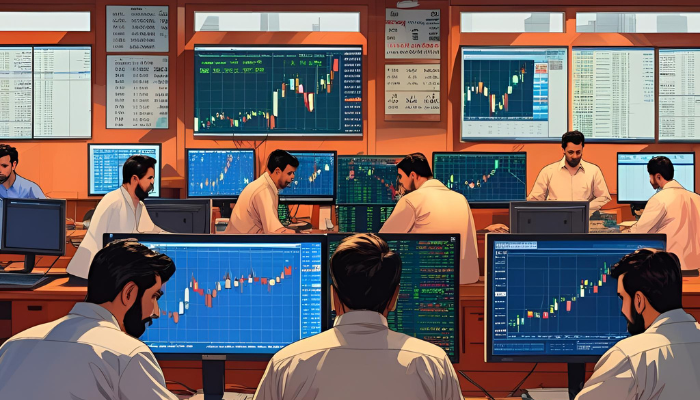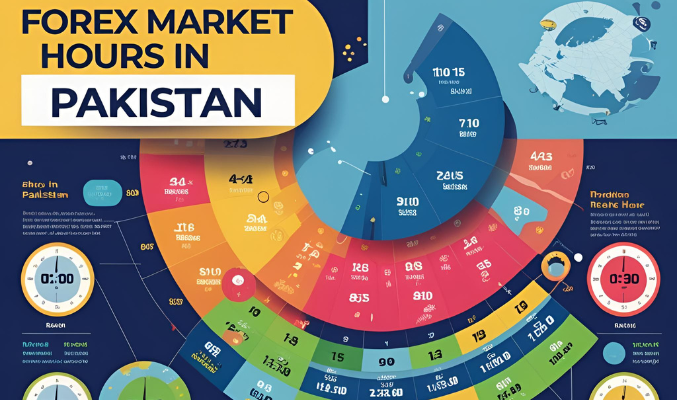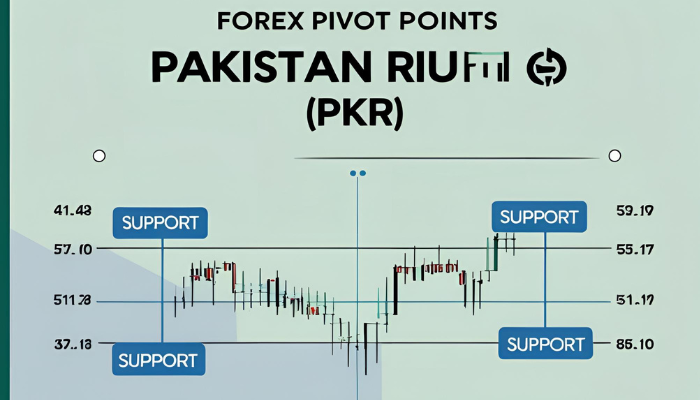The foreign exchange market, also known as the forex market, is a worldwide, decentralized market where currencies are traded five days a week, around-the-clock. Traditional stock markets have set opening and closing hours. But, when it comes to the forex exchange market, it runs continually. The reason is many time zones of the world’s major financial centers. Thus, for every aspiring forex trader understanding the 24-hour forex market and the significance of different trading sessions in terms of liquidity and volatility is essential.
Are you a new Forex trader and want to know about market hours and sessions? Don’t worry if you are feeling confused and reluctant. We are here with a complete guide of four main forex trading periods covered in detail, along with how they affect trading possibilities, market volatility, and liquidity. Stay with us.
Understanding Forex Market Trading Sessions
The currency market is divided into four main trading sessions, each focused on a financial hub. These sessions display strong trading activity across various time zones. When drafting the plans, traders must take into account these market hours to maximize trading possibilities and reduce risks.
The fact is when numerous sessions overlap, liquidity tends to be stronger, which ultimately improves trading conditions. The overlap between the London and New York sessions may appeal particularly to traders who desire increased volatility. Let’s get into the details of four major sessions.
Asiatic Session in Sydney:
Time Zone: GMT 10:00 to 7:00
Significant Currency Pairs: AUD, NZD, and JPY
Importance: The Sydney session kicks off the trading week. It is renowned for having relatively low volatility. Since it can affect trading in later sessions, it offers crucial insights into the mood of the Asian markets. The trading week begins on Sunday evening (GMT) with the Sydney session, which lasts until Monday. Since major financial centers like Tokyo and London are closed. It is the least active session in terms of trade volume and liquidity. Participants in this session of trading are primarily from New Zealand, regions of Asia, and Australia.
Asiatic Session in Tokyo:
Time Zone: GMT 12:00 to 9:00
Significant Currency Pairs: JPY
Importance: When it overlaps with other sessions the Tokyo session has greater liquidity. This session has an impact on the following London session and is crucial for trading the Japanese yen (JPY).
The Tokyo session begins as the Sydney session comes to an end. The session is characterized by higher trading activity. What Is the reason behind its higher market activity? The Japanese yen is currently the third most traded currency worldwide. Traders from other Asian nations take part actively during this time, along with Asian banks and other financial institutions.
European Session in London:
Time Zone: GMT 7:00 to 4:00
Significant Currency Pairs: USD, GBP, and EUR
Importance: The London session offers a variety of trading opportunities. It is thought to be the busiest and most turbulent period. London sets the tone for the rest of the day as the world’s financial center has a major effect on the direction of the forex market.
Many traders believe that the London session is the most significant one. It crosses over into the New York and Asian sessions, which increases trade volume and volatility. The session accounts for a large amount of the daily forex trading activity. Its important financial centers are in Europe, London, Frankfurt, and Zurich.
North American session in New York:
Time Zone:GMT 12:00 to 9:00
Significant Currency Pairs: USD
Importance: Due to the overlap between the New York and London sessions, the New York session has a significant impact. It generates a lot of trade volume and volatility. Additionally, it is the last significant session before the market closes for the weekend.
The New York session overlaps with the London session and is the last significant trading session of the day. Additionally, it is renowned for its extreme volatility. Liquidity reaches its highest during this session when major U.S. financial centers like New York and Chicago start to operate.
Peak Trading Hours and Overlapping Sessions
There are greater trading opportunities when several markets are open at once during overlapping sessions. For active traders, these overlaps result in moments of high liquidity and elevated volatility. The following overlap sessions are most noticeable:
New York and London Overlap:
Time Zone: GMT 12:00 to 4:00
Significance: Because of the combined influence of the two main financial centers leads to more liquidity and tighter spreads. Its overlap is seen as the optimum period to trade. Traders can earn profit during this time from significant market changes.
London and Tokyo Overlap:
Time: GMT 7 to 9
Significance: This overlap can cause significant price movements as the Asian session closes. More so, the European session begins, providing another possible trading opportunity.
New York and London Overlap:
Time Zone: GMT 12 to 4
Significance: Because of the combined influence of the two main financial centers, it leads to more liquidity and tighter spreads. This overlap is seen as the optimum period to trade. Traders can profit during this time from significant market changes.
Which Factors Affect Forex Market Hours?
The market’s dynamics during various trading sessions are influenced by several factors. We have discussed some main factors in our guide. Let’s break the chemistry.
Releases of Significant Economic Data
It includes GDP reports, employment statistics, and interest rate decisions, that are frequently made during particular sessions. Currency exchange rates and market volatility may be greatly impacted by the news.
Global Events
Political and geopolitical events have the potential to cause abrupt changes in market sentiment. Additionally, it might enhance trading activity during the appropriate periods.
Public Holidays
Different countries’ national holidays may result in less trading activity. More so, it leads to possibly irregular market fluctuations. When formulating trading plans, these holidays should be taken into consideration.
Saving Time
Some countries follow daylight saving time, which affects the timings at which some sessions begin and end. To keep up with changes to the market’s opening hours, traders must be aware of them for maximum benefits.
Seasonal patterns
The things like agricultural cycles or tourism tendencies, several currencies are included in seasonal patterns. These trends may have an impact on traders’ decisions regarding their trading hours.
Financial Center Operations
When the main financial centers are converging, the Forex market sees an increase in trading activity. Higher trade volumes and greater volatility are brought about by the overlapping hours. For instance, there are several hours when the trading periods in London and New York overlap, which significantly increases liquidity.




